
First, a little about personalized product recommendations. Those, who already know what we are talking about, can skip to the next point.
So, what does it look like? Imagine, somebody visits your online store and notices on the main page products of interest to that person. Your visitor may have read marketing or tech reviews on the newest MacBook model and now sees different configurations of that model in your catalog. The same happens if somebody browsed through the category “Running Shoes” in your store — this visitor is shown popular models of the running shoes you sell.
Your main page is not the only place where this story happens. A visitor can see product recommendations on category pages, product detail pages, shopping cart page, even your 404 page.
What we just described is called product personalization, and it is one of the pillars of modern eCommerce.
Product personalization is not only about your website. Everybody has seen email newsletters featuring a block of recommended products at least once. The same goes for display ads showing us the items we left in the cart in some online store or lightning-fast web push notifications with a link to a personally tailored selection of recommended products.
Long story short, product personalization has been for a while and is remaining a crucial part of marketing strategy in online retail. You’re very unlikely to find a store that is successful without any kind of personalization, except maybe a mono-product store or a small local one.
What you may yet not know is that the regular, Big Data-based, personalization may quite often turn it from cure into a trap for an online retailer.
Big Data — a Well-hidden Trap

A Big Data-based personalization is way too far from the perfection many wants you to believe in. Here are some critical issues you’ve probably never recognized before.
Illogical Recommendation Logic
Statistical data is what drives a Big Data-based personalization. It means that if enough customers have bought this crib or that laser printer along with that coffee maker, these two will be shown in the recommendation to the coffee maker. Just take a look at this example:
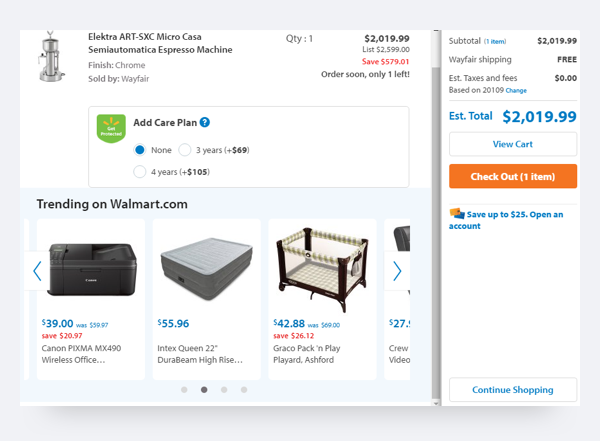
There is no viable logic in this case. The recommendations don’t match the primary product, but Big Data is Big Data, and you cannot argue with statistics.
Universal Does Not Mean Precise
Big Data is not the most precise tech in online retail. Earlier, we mentioned the running shoes example. What do we have to add to it? Yes, the visitor will see the most popular models. Yes, those will be running shoes. Is this enough for the recommendation to catch the visitor and for purchase to happen? No.
The final purchase decision in each retail segment — Apparel & Accessories, Construction & Repair, Auto Products, Pet Products, Consumer Electronics or Home Appliances, Cosmetics & Beauty — is affected by a very specific set factors varying from segment to segment.
For instance, an Apparel & Accessories store needs to recommend items by gender. The items must also correspond in size. Nobody needs another pair of favorite running shoes if they’re two sizes smaller or an XXL hoodie when your size is XS.
It can be illustrated by the following example: while a visitor of Forever 21 chose and added to the cart an XS hoodie, he can still see recommended items in the wrong size.

As you’ve already guessed, these are Big Data-based recommendations:
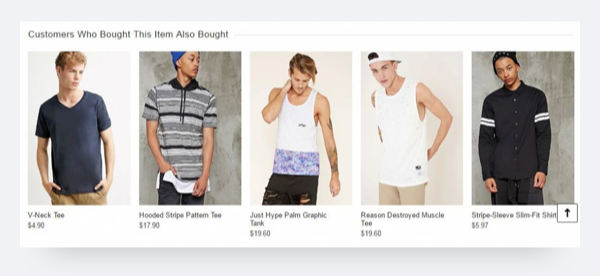
Some items are in the wrong size, for instance, this white muscle tee is available only in XL:

Big Data chooses to skip this fact. Somebody may overlook this while others will see a critical issue. What’s certain is that there are retail segments where such attitude to personalization can harm the customer and, therefore, your business.
Big Data Can Do Harm
Take a good example — FMCG (Fast-Moving Consumer Goods). Some products in this category are strong allergens to a lot of people while posing no threat to others. Also, there are customers with illness treatments prescribing a strict diet and another portion of your audience with no such limitations.
In an ideal marketing world, product recommendations momentarily recognize everybody and adapt to the new requirements on the go. Big Data is far from ideal. As a result, store recommends a customer with personal allergies products containing the allergen.
A situation where a diabetic deliberately buys a milk chocolate bar full of sugar or a lactose-intolerant person — a regular yogurt is hardly possible. However, these useless to the customer products will be taking up space in the recommendation block wasting your money, while other relevant products are skipped. No relevance to the buyer equals no sales.
What Is Progressive Personalization for Niche?
Progressive Personalization is a new technology that progressively and constantly adapts recommendations to each new visitor, each time he changes his behavior. The ultimate goal is to keep the recommendations highly relevant excluding non-fitting products from the block.
The Progressive Personalization technology has been developed by REES46 Technologies and serves as the base of REES46 Marketing Suite — a set of marketing automation & personalization tools for online retail.
Taking into account each retail segment has a different set of key factors affecting the purchase decision, such as pet type and breed for pet products or skin type and current condition for cosmetics, REES46 has Niche Solutions for each specific retail segment.
Let’s focus on few and see the principles this tech works by, and give our interested readers links to more detailed descriptions.
Progressive Personalization in Pet Products Niche
A cat owner is not to be recommended food formulas for dogs or fish. An Alsatian owner is not to be recommended products fitting small dog breeds. Now that you have those two basic examples, let’s see the whole list of key parameters for this segment:
- Pet type.
- Pet breed.
- Pet age.
- Brand preferences (customers, as well as their pets, tend to develop liking for a certain brand).
- Purchase frequency (there are products bought more regularly than others, e.g. food formulas).
These key parameters allow the Progressive Personalization technology adjust the recommendations in milliseconds. Consider this example:
The main page of a store. New visitor coming the first time. The recommendations show mixed products: both for dogs and cats.
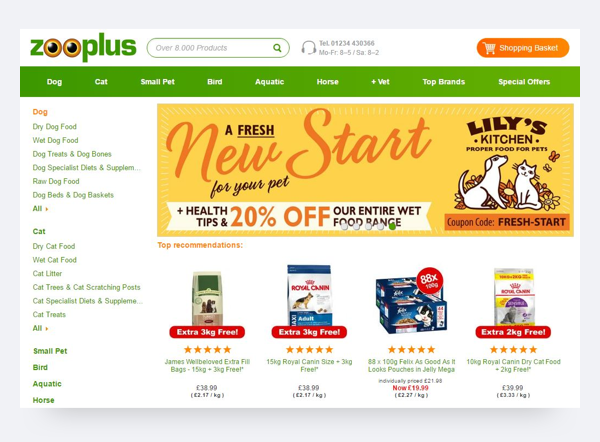
Again the same page. The recommendations changed after the visitor has taken interest some cat products.
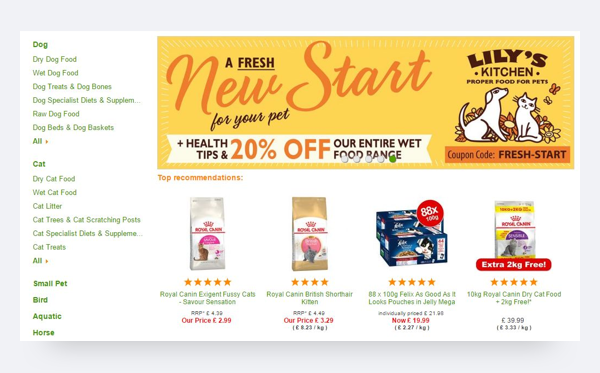
More details of Niche Solution for Pet Products are available for by this link.
Progressive Personalization in Apparel & Accessories Niche
In this category, customers mostly buy clothes, shoes, and accessories for themselves. It means recommending a male customer women’s products or recommending a customer with a shoe size of 45 footwear of 39th size is pointless.
The key parameters in this niche are:
- Customer’s gender (men’s, women’s or unisex products).
- Customer’s clothing and shoe size.
- Body type (and fitting style).
- Individual brand preferences.
If a recommendation engine can calculate these parameters depending on visitor actions, it can exclude irrelevant products from the recommendations. Consider the example below.
A chosen product page with women’s Nike sneakers.
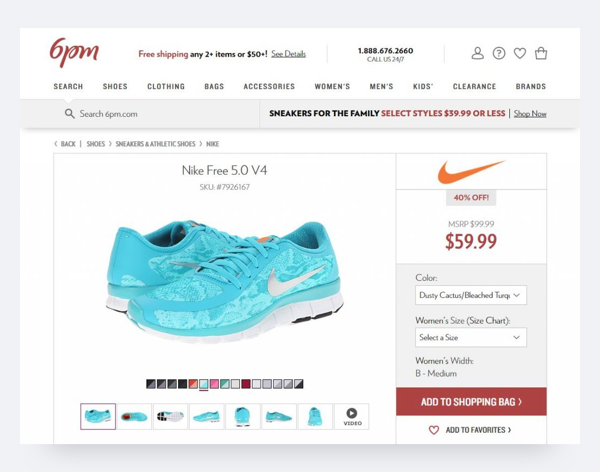
The recommended products are sneakers for women, from the same brand.
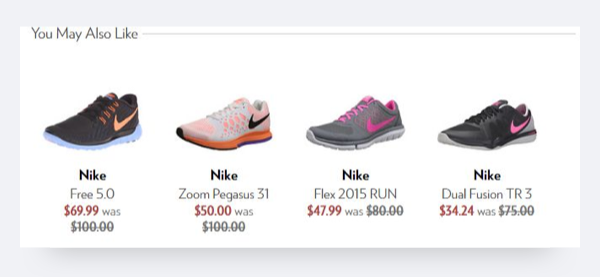
Without a progressive personalization, the recommended items could include both women’s and men’s shoes of various brands. This would significantly lower the chances of a successfully recommended buy.
More details about Apparel & Accessories niche personalization are available by this link.
Progressive Personalization in Cosmetics & Beauty Niche
Cosmetics is one of the trickiest retail segment to operate it. A whole multitude of different factors affect the purchase decision: if the product fits the skin and hair type, if the current condition of customer’s hair and skin allows using the product, if the customer has any allergies, if any product components are potentially allergenic, and so on.
Here is the whole list of key parameters in this retail segment:
- Customer’s gender (men’s, women’s or unisex products).
- Product hypoallergenic properties.
- Skin type (dry, normal, oily, mixed).
- Skin condition (damages, diseases).
- Hair type (dry, normal, oily, mixed).
- Hair condition (brittle hair, split ends).
- Type of application.
- Place of application (hands, feet, body, face).
- Brand preferences.
- Purchase frequency (almost all cosmetic products are bought on the regular basis).
Relying on these key parameters, a recommendation system can show only relevant products in each recommendation block, to each visitor. Consider the example below.
A chosen product page with shampoo for oily hair by Shea Moisture.
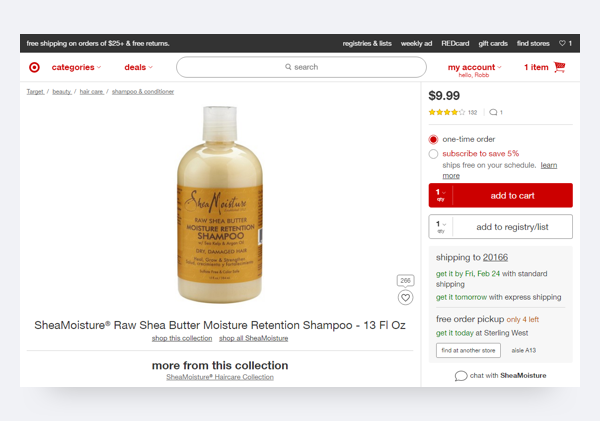
The Progressive Personalization technology makes sure the recommendation blocks show only relevant products — by the brand and by the hair type.
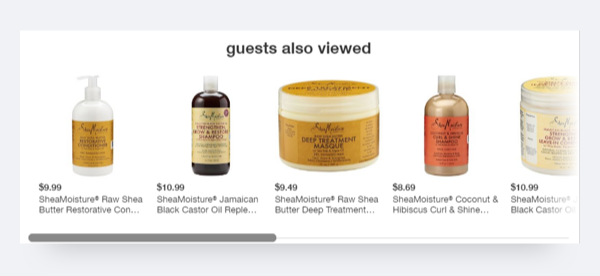
More details about Cosmetics & Beauty niche personalization are available by this link.
Other Niches
By now, REES46 Marketing Suite includes Progressive Personalization-driven Niche Solutions for the following 8 retail segments:

Progressive Personalization technology is successfully used alongside the “classic” Big Data making up for its flaws and bringing a new, supreme level of product recommendations. This combination leads to an average increase of +24% in sales, by the retail niche.
A more detailed explanation of the underlying mechanics and logic of this tech in each segment is in our eBook. Get your own free copy.
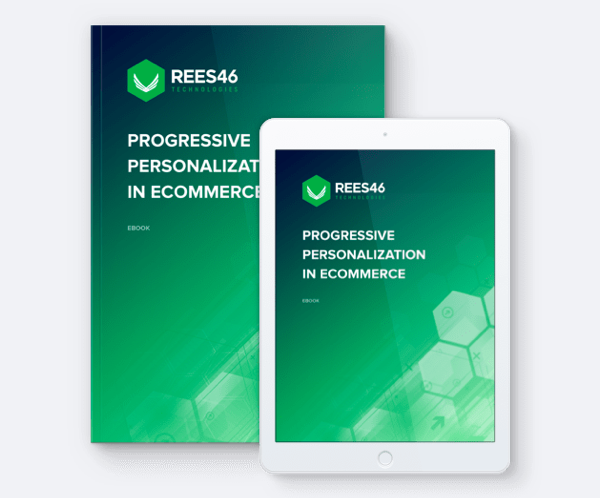
Awesome post thank you for sharing.
Thanks, Epifania.